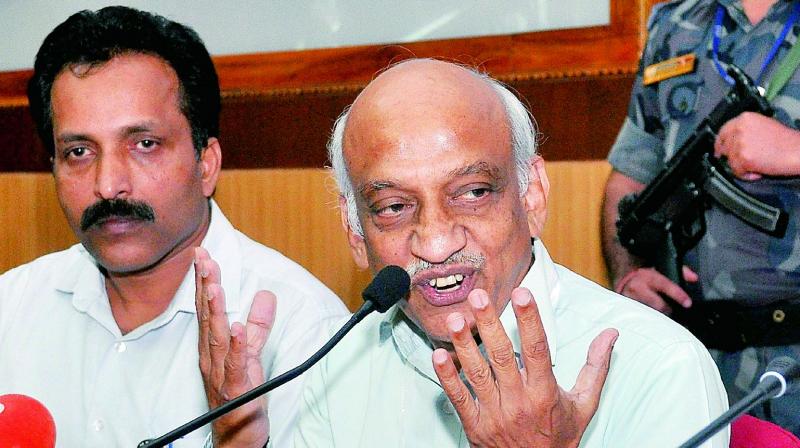Isro suspects snag in explosive bolts

Nellore: Isro scientists suspect that a problem in the pyro mechanism — explosive bolts used to separate the heat shield —was responsible for the failure of the IRNSS-1H satellite to separate from the PSLV rocket after its launch from Sriharikota. “This kind of failure is rare,” an Isro scientist said, stressing the need for in-depth analysis to detect the root cause of the anomaly. Former Isro group head Chivukula Ravindhranath said that the heat shield (also called fairing) separation on launch vehicles is generally very reliable, and scientists don’t even consider this type of failure as a possible risk.
He said everything related to heat shield separation has a back-up system except for the explosive material used in the bolts. Usually, a number of tests are performed on the heat shield to guarantee successful separation. The heat shield is an encasement that protects the satellite in the rocket. Once the rocket is in orbit, the heat shield separates and releases the satellite in space.
The heat shield normally separates as a result of the bolts that explode and split the fairing into two halves and pushes these away from the rocket to avoid damaging the satellite. Mr Ravindranath says there have been instances of a total failure of a mission when the heat shield of the rocket failed to open. On November 30, 1970, an Atlas Centaur rocket launched in the US failed to release the satellite as a faulty explosive latch prevented the heat shield from separating. In August 2009, the Science and Technology Satellite-2 (STSAT-2) on South Korea’s Space Launch Vehicle’s (KSLV-1) maiden flight failed to achieve orbit because the rocket’s payload fairing did not separate as planned.
On March 4, 2011, the Glory Satellite Mission of USA’s Taurus XL Rocket failed as the heat shield did not separate. The previous launch attempt of an Earth science spacecraft, the Orbiting Carbon Observatory on board a Taurus XL rocket also failed to reach orbit on February 24, 2009, as the fairing did not separate. China’s Long March 2E had a mishap as its heat shield broke up while the vehicle was reaching supersonic velocity at about 7 km on December 22, 1992. Even though the shroud opened too early, and the satellite was destroyed, the remaining upper section of the booster was strong enough structurally to sustain the flight. The upper stage entered orbit as planned, but without its payload.

